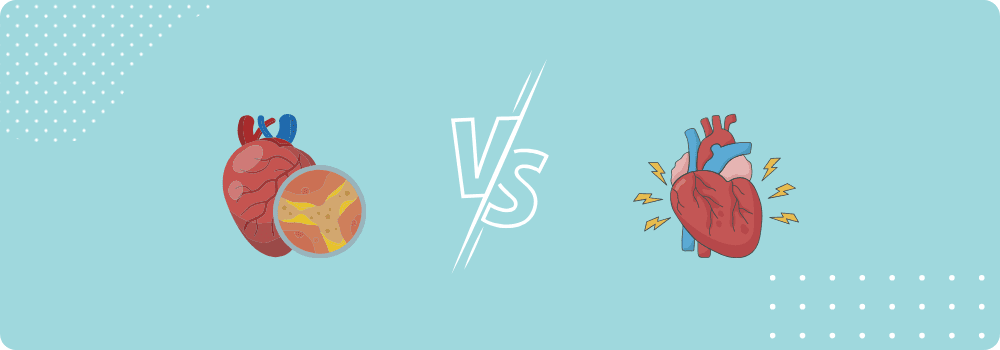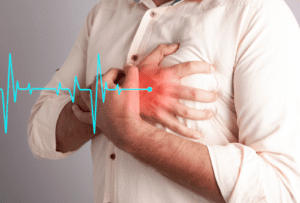- AHA Training Materials
By Course
By Item
By Year
- CPR Manikins
By Series
By Type
- CPR Training Accessories
By Brand
By Type
- AED Trainers
By Item
By Brand
- REQUEST A QUOTE
- SPECIALS

Oftentimes people confuse heart attack and sudden cardiac arrest, or SCA. This common misconception usually occurs because the media uses them interchangeably.
In actuality, heart attack and SCA are two distinct conditions with completely different outcomes and levels of severity.
A heart attack, also known as myocardial infarction, happens when blood is not circulating throughout the body. The part of the heart that is not receiving blood will start to die. When this happens, someone may experience symptoms such as chest pain, a radiating ache or discomfort, cold sweat, fatigue, heartburn or indigestion, dizziness, or shortness of breath. While some of these symptoms, like dizziness, come and go, some are persistent, like chest pain, and when that happens, there may be a serious problem.
When you or someone around you is experiencing a number of symptoms, especially persistent chest pain, it is important to get help as soon as possible—9-1-1.
This occurrence is not to be confused with sudden cardiac arrest.

SCA is a more life-or-death experience than heart attack because the heart stops beating and the person stops breathing.
Cardiac arrest can be look like fainting but recognizing that someone needs CPR and being able to administer it can be the difference between life and death. If someone is breathing, they do not need CPR.
If a person is in fact experiencing SCA, administering CPR helps get oxygen to the brain and other vital organs while using an automated external defibrillator, or AED, to administer a shock is the only way to restart the heart.
First, make sure that the scene is safe before helping someone. Once you identify that the scene is safe and the person has no heartbeat or respiration, signal one specific person to call 9-1-1 or do it yourself. Once emergency medical services is contacted, start CPR.
It is important to know how to do CPR to keep oxygen and blood circulating through the body. This is critical because organ damage will occur without oxgygen being carried in the blood throughout the body. To learn more, get CPR certified, or buy your own AED visit onebeatmedical.com.